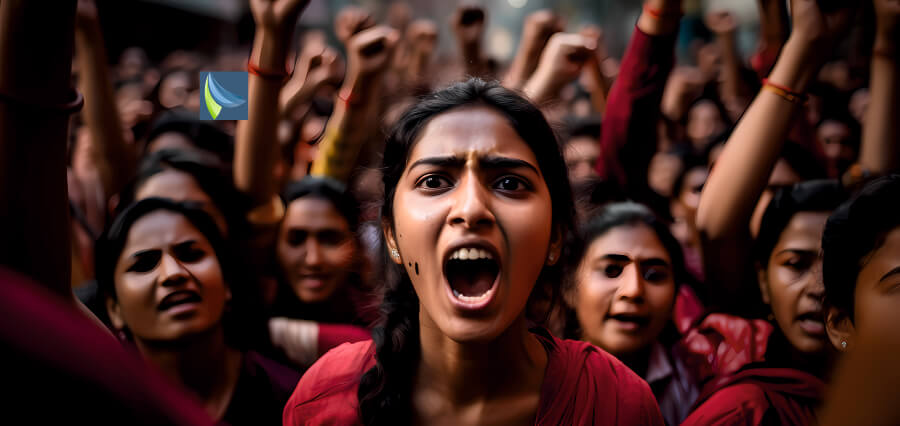Irradicating Detrimental Roots
This long and torturous journey to women’s rights was marked from beginning to end by such historic social reform movements to legal battles and the coming forth of many brave ladies along the way. Of all the challenges Indian women throughout history have endured-be it strict caste systems to class structures or patriarchy entrenched heavily finally reach a point where they would fight for equality and justice, triumphs and activism which go into the making of the present India are also in that history.
Some early efforts at redressing the lot of women were made in India during the Indian social reform movements at the beginning of the 19th century. Reformers such as Raja Ram Mohan Roy, Ishwar Chandra Vidyasagar, and Jyotiba Phule spoke out for women’s rights and opposed such things as child marriage, Sati-the burning of widows and the prohibition of education for girls. One of the pioneers, who had worked to ban Sati, was a practice in which widows were compelled to self-immolate or were burnt alive on their husband’s funeral pyre. His campaigns did not go in vain, and the Sati Regulation Act was passed in 1829, a glorious victory for women’s rights.
Meanwhile, social reformers like Vidyasagar presented themselves for women’s education by demanding girls’ schools. His efforts led to the Hindu Widows’ Remarriage Act of 1856. According to law, a widow could be remarried. It was a first step toward ending the ostracism against the widows.
Role of Women in the Independence Movement
The fight for women’s rights in India is very closely allied to the fight for Indian independence. Indian women exercised great political and social agency when fighting for freedom. Many of us are already aware of strong women leaders such as Sarojini Naidu, Kasturba Gandhi, and Kamaladevi Chattopadhyay who fought for the nation’s as well as women’s good. Sarojini Naidu participated actively in all the Non-cooperation movements, the Home Rule movement, and Salt Satyagraha led by Mahatma Gandhi. Additionally, she was the first woman ever elected as president of the Indian National Congress in 1925 and was instrumental in encouraging women to participate in the Salt March and Quit India Movement.
Kasturba Gandhi was the wife of Mahatma Gandhi who had been a very vital leader in the women’s movement and social activism mainly in the independence movement across rural India. Kamaladevi Chattopadhyay, so far as that goes, went a bit beyond this struggle as purely political, where she also worked for the rejuvenation of Indian handicrafts and economic emancipation for women.
Legislative Reforms Since Independence
This setup of legal and political structures which reflected this need for gender parity was started through the framing of the Constitution of India that gave women equal status through rights to vote and protection from discrimination as a matter of law or having the right to the disposition of property. Moreover, Dr Babasaheb Ambedkar, India’s constitutional architect, also contributed to providing women’s rights, emphasising their educational, equality and property rights.
During the following years, a series of laws were enacted to protect women’s rights and improve the status of women in society. The Hindu Succession Act of 1956 gave rights to women for inheriting their properties, and the Dowry Prohibition Act of 1961 attempted to curb the menace of dowry, which had long been a source of gender-based violence. The other major legislation was the Marriage Laws (Amendment) Act of 1976, making divorce and maintenance laws more equitable.
Modern-day Struggles and Women’s Empowerment
Of course, much has been achieved, but violence, discrimination, limited access to education and opportunities for employment for women within India continue to be problems. But today, women fight for rights in new powerful ways and voices. In 2018, the #MeToo movement picked up fast all over the world, as in India women belonging to a cross-section of society exposed harassment and sexual violence committed against them.
Activists Medha Patkar, Aruna Roy, and Shabnam Hashmi question the social injustices going on in society, bring forward the issues of poor, marginalized women in villages, and raise issues regarding caste-based discrimination, domestic violence, and access to health care.
Not just education and law, women have also conquered spaces such as sports, politics, and business. Famous personalities like Mary Kom (boxing), P.V. Sindhu (badminton), and Nirmala Sitharaman (Finance Minister) have made significant contributions to their respective fields.
Conclusion
The journey of Indian women’s fight for rights is one of persistence, courage, and resilience. From the social reforms of the 19th century to feminism today, women have never ceased advocating for equality in every walk of life. Despite how much remains to be done, the improvement seen in education, law, and social justice is a tribute to the forces of Indian women and their unrelenting pursuit of equality and human dignity.


